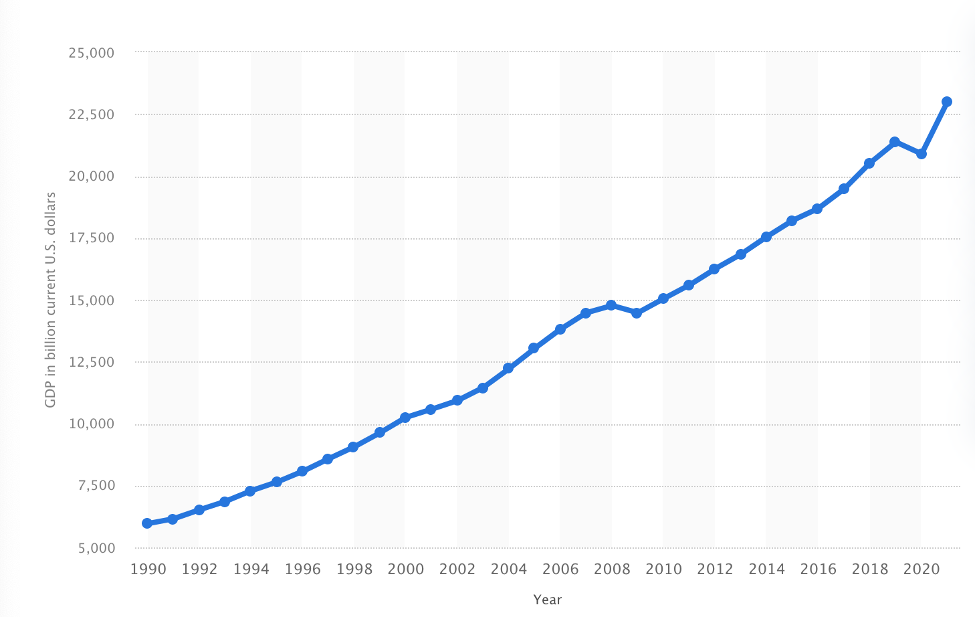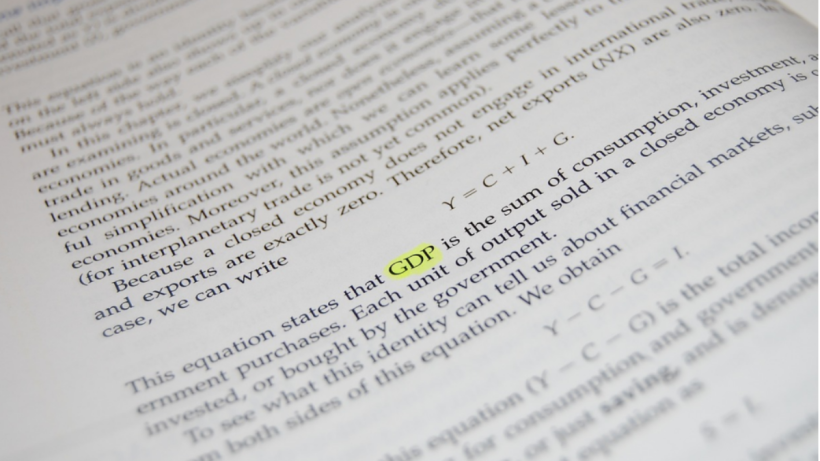Economic growth ebbs and flows from year to year. So, what is GDP? Gross Domestic Product (GDP) is a measure of the economic output of a country. It is defined as the aggregate market value of all goods and services produced within a nation in a given year. GDP is used to measure the size and growth of an economy and compare the economic performance of different countries.
GDP is directly related to the everyday consumer in the economy in several ways. First, GDP measures the total amount of goods and services produced in an economy, including the goods and services consumers purchase. Therefore, a higher GDP generally means more goods and services are available for consumers to buy.
GDP also reflects the overall health of an economy. When GDP is growing, it generally indicates that the economy is expanding and that consumers have more disposable income to spend. This can lead to increased demand for goods and services, which can drive up prices and lead economic growth.
On the other hand, when GDP is declining or stagnant, it can indicate that the economy is slowing down and that consumers may have less disposable income to spend. This can lead to decreased demand for goods and services, resulting in lower prices and an economic downturn.
GDP is just one measure of economic performance, and it does not consider certain factors, such as income distribution, quality of life, or sustainability of economic growth. However, it is an essential indicator of the overall state of an economy and can provide valuable insights into the economic well-being of consumers.
By the Numbers: How is the USA Performing in Terms of GDP?

As the world’s number one economy, the USA is often considered the GDP growth and performance benchmark. In 2021, US GDP was measured at $22,996.10B. This data, determined by the World Bank, indicates robust growth in the US. As a matter of fact, US GDP growth is so significant that it accounts for an estimated 17.2% of the global economy. In addition, there are notable trends from the GDP growth figures mentioned above.
- 2012 – $16,253.97B
- 2013 – $16,843.19B
- 2014 – $17,550.68B
- 2015 – $18,206.02B
- 2016 – $18,695.11B
- 2017 – $19,479.62B
- 2018 – $20,527.16B
- 2019 – $21,372.57B
- 2020 – $20,893.74B
- 2021 – $22,996.1B
- 2022 – estimated close to 2021
GDP and Inflation Expectations – a Delicate Balance
When GDP figures are compared yearly, they are typically adjusted for inflation to account for changes in the general price level. This allows for a more accurate comparison of a country’s economic output over time, as it allows for the effects of inflation to be removed.
To adjust for inflation, GDP figures are typically expressed in constant dollars, which are dollars that have been adjusted for inflation. This allows for comparing the real value of economic output over time, as it removes the impact of changes in the general price level.
For example, if a country’s GDP in 2021 was $1 trillion in current dollars, and the GDP in 2022 was $1.1 trillion in current dollars, it would be difficult to determine whether the economy had grown or the increase was simply due to inflation. However, if the GDP figures were adjusted for inflation and expressed in constant dollars, it would be possible to determine the actual rate of growth in the economy.
It’s important to note that adjusting for inflation is not a perfect process, and there can be differences in how inflation is measured and the way it is accounted for in GDP figures. However, adjusting for inflation is generally seen as the best way to compare GDP figures from year to year and determine the real economic growth rate.
Why Should the ‘Little People’ be Concerned About GDP Metrics and Other Macro Variables?
As an everyday consumer, economic indicators such as GDP can be vital because they can provide valuable insights into the economy’s overall health and labor market state.
For example, if GDP is growing and the economy is expanding, it may be a good time to look for a new job or to consider starting a business. On the other hand, if GDP is declining or stagnant, it may be a good idea to be more cautious about making major financial decisions.
Economic indicators, such as unemployment and inflation rates, can also be necessary to everyday consumers because they can affect the cost of living and the availability of jobs.
A low unemployment rate may indicate plenty of job opportunities available, while a high unemployment rate may suggest that finding work may be more challenging. Similarly, a high inflation rate can erode the purchasing power of your money, while a low inflation rate can help to maintain the value of your savings.
Overall, economic indicators such as GDP can provide valuable insights into the state of the economy and help consumers make informed decisions about their financial planning and spending. By keeping an eye on these indicators, consumers can stay informed about the economic conditions that may affect their daily lives.
Laila Azzahra is a professional writer and blogger that loves to write about technology, business, entertainment, science, and health.
